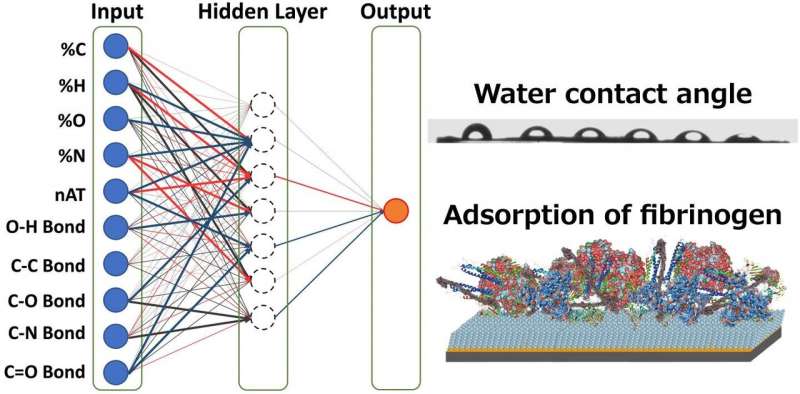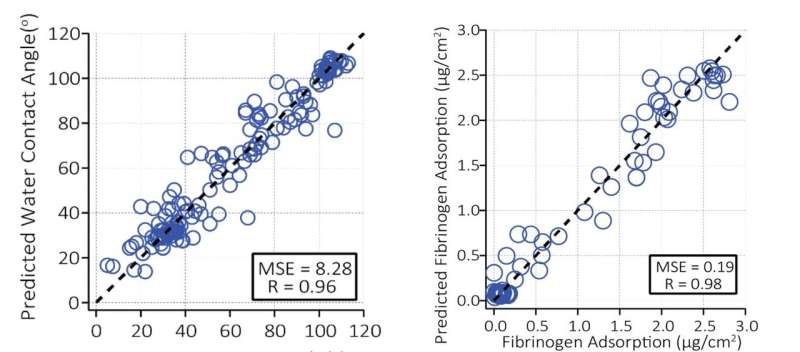A leap forward for biomaterials design using AI

Researchers at Tokyo Institute of Technology (Tokyo Tech) have used artificial intelligence (AI) to predict the degree of water repulsion and protein adsorption by ultra-thin organic materials. By enabling accurate predictions of water repulsion and protein adsorption even by hypothetical materials, the team's approach opens up new possibilities for the screening and design of organic materials with desired functions.
Using informatics in the field of inorganic material design has led to the rise of new types of catalysts, batteries and semiconductors. In contrast, informatics-based design of biomaterials (i.e. organic as opposed to inorganic solid-state materials) is only just beginning to be explored.
Now, a team of researchers at Tokyo Tech led by Associate Professor Tomohiro Hayashi has successfully made inroads into this emerging field. They used machine learning with an artificial neural network (ANN) model to predict two key properties—the degree of water repulsion and affinity to protein molecules—of ultra-thin organic materials known as self-assembled monolayers (SAMs). SAMs have been widely used to create model organic surfaces to explore the interaction between proteins and materials due to their ease of preparation and versatility.
By training the ANN using a literature-based database of 145 SAMs, the ANN became capable of predicting water repulsion (measured in terms of the degree of water contact angle) and protein adsorption accurately. The team went on to demonstrate the prediction of water repulsion and protein adsorption even for hypothetical SAMs.

SAMs are attractive for the development of many applications in organic electronics and the biomedical field. The two properties investigated in the study are of enormous interest to biomedical engineers. "For example, implant materials that exhibit low water contact angle enable fast integration with the surrounding hard tissues," Hayashi says. "In the case of artificial blood vessels, the resistance to the adsorption of blood proteins, in particular fibrinogen, is a critical factor to prevent platelet adhesion and blood clotting."
Overall, the study opens the door to advanced material screening and design of SAMs with potentially greatly reduced costs and time scales.
The researchers plan to continue scaling up their database and, within a few years, to expand their approach to include polymers, ceramics and metals.
More information: Rudolf Jason Kwaria et al, Data-driven prediction of protein adsorption on self-assembled monolayers toward material screening and design, ACS Biomaterials Science & Engineering (2020). DOI: 10.1021/acsbiomaterials.0c01008
Provided by Tokyo Institute of Technology



















